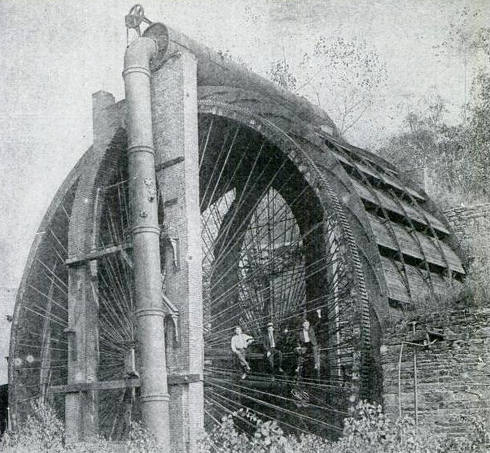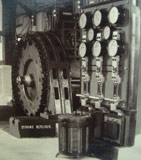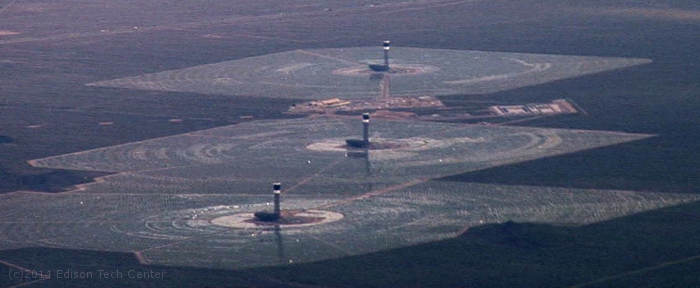Power Generation
Humans have been trying to extract power from nature since the windmills in Ancient Greece. There are 3 main ways to extract energy from nature:
1. Movement
2. Visible Light or Heat Extraction
3. Types of Electrical Power Generation
1. Movement - moving (mechanical power) or moving the state of a solid to another state
Early water wheels Windmills - wind used to turn shafts, then used to do everything from grind flower to run cotton mill machines
Hydropower - falling water used to the same tasks as above
Animals - biological conversion of vegetation into calories
Wood and charcoal - heats water to make steam and powered reciprocating steam engines (pre-electrical age)
Explosive chemical reactions - dynamite and other explosives used to break up rock and move/break material
Acids - used to dissolve material, thus removing it
Slow combustion - fire used to fell trees and clear land for farming
2. Visible Light or Heat Extraction:
Wood
Charcoal - made by heating wood without oxygen, charcoal is not a great maker of visible light
Animal Oil - this was used in lamps for lighting, whale was the most common type
Coal Gas - "Town Gas" was extracted from coal through a dirty process, it is made of hydrogen, carbon monoxide, methane. Electric lights replaced coal gas and helped stop this sooty practice. Today china is making natural gas from coal in a dirty process. Coal gas is not found in other places anymore.
Petroleum Products - kerosene, gasoline, oils
Electricity - the most efficient and 'green' way to produce artificial light
Chemical reactions - cyalume sticks, fireworks, emergency flares and materials which absorb light and release it later ("glow in the dark").
Passive Solar - design of buildings which maximizes heat and light collection from the sun in winter, and is equipped with systems that keep it cool in the summer. Hot water heaters on roofs are also passive solar.
3. Electrical Power:
Chemical reactions:
Batteries
Fuel Cells - takes oxygen and hydrogen (H2) and makes electricity. It can also use diesel oil instead of H2 (PEM fuel cell)
Thermoelectric - extract energy by converting heat energy into electrical energy
Piezoelectric effect - extracts energy from crystals/molecules, useful only for tiny amounts of powerWater Power:
Hydro power - using falling and moving water to produce motion which turns a generator
Tidal Stream Generator - using movement of tides to turn a turbine (like an underwater wind turbine)
Ocean thermal energy conversion - OTEC uses a turbine driven by water moving between cold deep water and warmer water above
Combustion (coal, oil, gas, wood):
Steam Turbine - channels hot steam through a turbine to create motion
Reciprocating Steam Engines - uses steam pressure through a piston
Internal Combustion Engines:
Gas Turbine - burns natural gas or other fuels
Diesel Engine - typically used to power locomotives (diesel electric) or back-up generators
Gasoline Engines - typically used in small scale generators (home generators) and powers automobile power systems
Nuclear:
Nuclear Fission used to power a Steam Turbine
Cold Fusion - a way to create massive amounts of heat in a compact device. Hydrogen ions are sucked into a lattice of nickel, and through atomic processes is converted to copper. This makes a lot of heat and can be used to make steam.
Solar Power:
Photovoltaic (PV)- direct current electricity from semiconductor materials exposed to the sun
Above: concentrated solar power (CSP) towers in the California/Nevada desert, the array of mirrors are computer controlled to always keep focus on a black area of the tower, heating water inside and making steam.Solar Thermal:
Concentrated Solar Power (CSP) - using mirrors to focus the sun on a liquid which is turned to steam and drives a steam turbine
Wind power:
windmillsEarth:
Geothermal - heat from the earth (typically volcanic zones) produces steam which can turn turbines or hot water heats another liquid with lower evaporation point which can turn a steam turbine.
Related Topics:
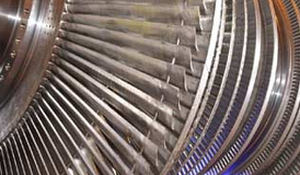
Steam Turbines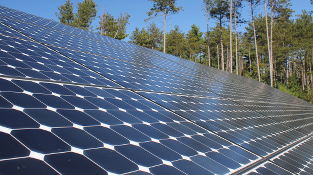
Photovoltaic (Solar Power)
Wind Turbines
Passive Solar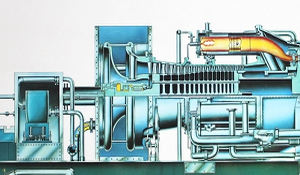
Gas Turbines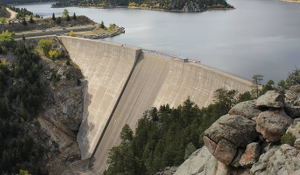
Hydroelectric Power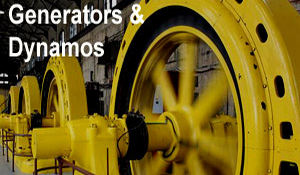
Dynamos and Generators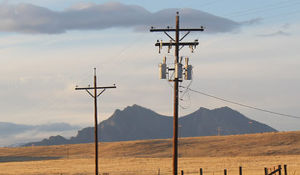
Power Transmission
Wires and Cables
Research:
M.W. and Jack Lampkin
Sources:
The Jack Lampkin Collection. Edison Tech Center. 2011
Twin Frontiers. General Electric. 1955
Bloomberg Businessweek. 2014
Cyalume Technologies, Inc
Extreme Tech. 2013


